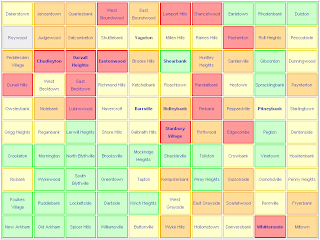
BitTrip.Beat walks through the valley of the shadow of Pong in a slick, attractive fashion, with addictive rhythm based game play and a twist on the old Pong formula. You play as a rectangle thing floating along through space with groovy 8-bit music and colorful, distracting pixelly stuff happening in the background while dots and blocks come at you from the right, intent on making sweet music with you.
There are two "life bars", one at the top, the "Multi" bar, and on the bottom, the "Nether". As you deflect dots, adding blips and beeps to the ongoing rhythm, the Mulit meter fills up and once it reaches max, you enter Hyper mode; the music gets funkier and more complex, and thus more enjoyable, while the graphics also get a face lift, adding flashes and effects to the game play. Eventually missing too many blocks will throw you back into normal mode, which is sad. On the opposite end, missing too many beats in normal mode will throw you into the Nether Realm, where there is no music, and the graphics are reduced to Pong-like black and white shapes with blips coming through the Wii-mote in a bland and dissatisfying way, until you earn your way out by successfully hitting enough blocks to get back into normal mode. It's a simple formula, and it will humble you, as the game gets more complex, the backgrounds more distracting, and the dots come at you faster and faster--often shifting behaviors and patterns without warning, forcing you to adapt quickly or suffer for your incompetence. Strangely, over the course of play I actually adapted to my incompetence, so there's really no need for me to play this anymore.

There are only 3 levels in this game, and I have only seen 1 1/2. You must progress through each level to reach the next, every time you play, unless you get your name on the high scores list for a given level , which took me over a week to do for the first track. Each level or song is at least ten minutes long, so you can imagine how frustrating, nerve wracking, and emasculating it is you get through the first song for the 50th time, then getting to the same gaw-damn spot in the second track for the 50th time, and having to go through all that shit again. My tail is tucked, and I am officially running away. I should have bought Star Tropics, or a 12 pack of grape soda instead.
If you're the kind of asshole that's good at old arcade games games like Donkey Kong, Pac-Man, Pong, etc., then by all means give this a try. Us cool people need to steer clear of this nifty nightmare.















